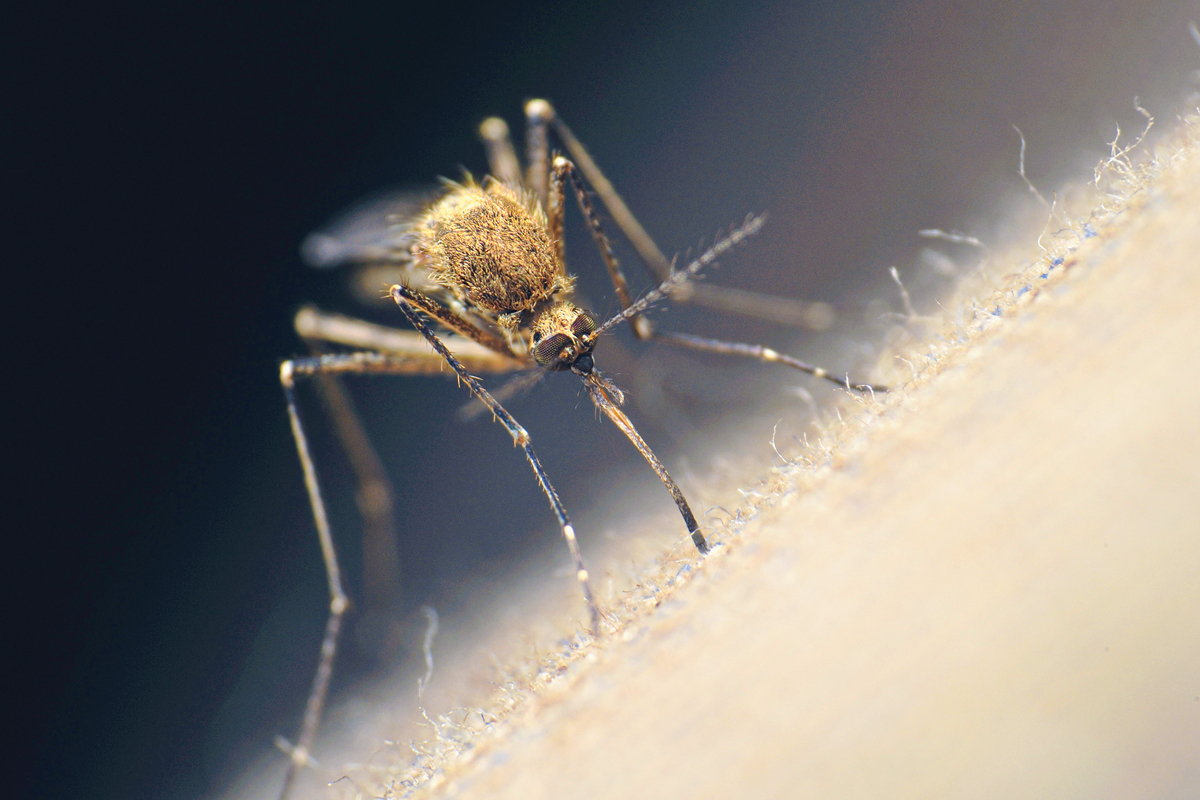Doing battle with the world's deadliest animal: WCU researchers join the fight against mosquito-borne diseases
 They’re more than an itchy irritation — mosquitos kill hundreds of thousands of people across the world, every year. File photo
They’re more than an itchy irritation — mosquitos kill hundreds of thousands of people across the world, every year. File photo
Sure, mosquitos are an important link in the food chain for amphibians, birds and other insects, but they’re annoying, they’re persistent and they can actually kill you. Two researchers at Western Carolina University are working on a faster, cheaper, more reliable method to identify which ones will.
“All mosquito-borne diseases are essentially preventable,” said Brian Byrd, professor of environmental health sciences supervisor of the Mosquito and Vector-Borne Infectious Disease Facility in the School of Health Sciences at Western Carolina University.
Diseases transmitted by the world’s deadliest animal are many and plague nearly the entire planet, especially the developing world. Tech titan Bill Gates has poured millions into ameliorating the threat, and a host of other nonprofits and academic institutions devote untold hours to reducing the estimated 1 million deaths mosquitos cause each year.
But not all of the 200 species in the United States or the 65 in North Carolina are disease vectors — only about a dozen or so.
Public health officials can’t afford to gamble with limited resources, so testing is crucial, albeit expensive and time consuming.
Right now, Byrd said, it’s a three-step process. Someone will go out into the field and place a trap commonly using small fans and dry ice — mosquitos are attracted to the carbon dioxide coming out of your face. Then, someone will go back out, pick up the trap, bring it into a laboratory and put some mosquitos under a microscope to determine the species.
Related Items
“And that’s not easy,” Byrd said. “It takes a trained individual to do that, and that initial step just tells us what mosquito we have. We don’t know how old it is, we don’t know if it’s infected, we don’t know if it’s already taken a blood meal, we don’t know if it’s risky and that’s been really a sort of Achilles heel for this kind of work.”
Then, another trained individual uses a molecular tool to test potentially disease-carrying species for the presence of dangerous viruses that can cause severe illnesses like dengue fever, malaria, West Nile and Zika.
They may sound exotic, but six cases of dengue popped up in Mecklenburg County earlier this summer, not long after the U.S. Centers for Disease Control and Prevention warned that reported cases globally this year were already double 2023’s totals. West Nile has been confirmed in Buncombe, Cleveland and Rutherford counties. La Cross encephalitis, which can produce fevers, headaches, muscle aches, stupor, disorientation, loss of vision, seizures, comas, paralysis and, rarely, death, is the most common mosquito-borne virus in North Carolina and is especially prevalent in the densely forested mountains of the west. Almost every county from Buncombe to Cherokee has confirmed multiple cases over the past two decades.
Some labs will even dissect the ovaries of these tiny insects — only females feed on blood — to see if they’ve already laid eggs. If they have, that means they’ve taken a blood meal, and it’s possible that the organism that the mosquito bit has been infected with a virus. It’s also possible that the virus has been passed on to hundreds of larvae, who days or weeks later will emerge from their aquatic nurseries and continue to transmit the virus. Mosquitos that aren’t born with viruses can also acquire them from feeding on animals that have become infected.
Decisionmakers in the public health sphere have a variety of tools to combat the spread of mosquito-borne diseases, including public education campaigns like “Tip it, toss it” and “Drain, dress, defend,” but there can come a time when interventions like spraying larvicides or adulticides is necessary.

In addition to the upper Midwest, the mosquito-borne virus that causes La Crosse encephalitis is most common in Appalachian states like North Carolina, Tennessee, Virginia and West Virginia. Smoky Mountain News graphic
If the testing process — which can take days or weeks and even include FedEx-ing mosquitos to labs — is still underway, it can be hard to know exactly when that time is, or if the interventions will be effective.
“The mosquitoes that transmit LaCrosse virus are what are called ‘container mosquitoes,’” Byrd said. “They’re daytime-active, so those types of approaches would not work.”
That’s the motivation behind six years of cutting-edge work by Byrd and Scott W. Huffman, a WCU chemistry professor, who have developed a novel way to improve upon existing methodology.
“The work we’re doing now is really less about a tool, but more about a process using mid-infrared spectroscopy, which is Dr. Huffman’s area of expertise,” Byrd said. “We’ve been scanning just a leg of a mosquito to identify what species it is, to see how old it is and to work towards understanding if it’s infected or not.”
Their new process speeds up identification of risky mosquitos by compiling a spectral library and doesn’t use consumables, like the current process does. Byrd said research suggests it works. Huffman recognized how significant the contributions by WCU students have been over the life of the project.
“Even though this is sort of our brainchild, most of the work has been done by our students, so they deserve a lot of credit,” he said. “Part of their education is to work with us in our laboratories. We’ve probably measured 10,000 mosquitoes. I’ve probably measured seven.”
Earlier this year, Byrd received a two-year research grant from NCInnovation to keep the project moving. Based in the Research Triangle, NCI funds researchers at public universities to help bridge the gap between government funding and private sector investors. The money comes from investment income on state reserves and thereby requires no recurring state appropriation. Private donations from large companies fund NCI’s overhead, freeing up even more of the investment income to be used on projects.
“NCI’s expertise from a business perspective, from a commercialization perspective, they’re lining us up with their regional directors to get us on a track so that we have the best chance for success,” Huffman said.
One way that’s happening, according to Byrd, is that NCI also helped them refine their testing process.
“Heretofore, we’ve used research-grade instruments to do this. Huffman, as chemist, has all these amazing instruments, and we’re using one that probably cost a quarter of a million dollars. The big goal here is to use a less expensive instrument, one that literally can sit on a benchtop at the local health department or regional health department or at a private industry,” Byrd said. “We just purchased a benchtop-grade instrument to see if what we did with the research-grade can be repeated with this more accessible, less expensive tool.”
Given that mosquito season runs from March to October in Western North Carolina, local health department officials would use such a tool eight months a year.
“One possible outcome for this sort of innovation or technology is by having more real-time knowledge, the public health people can know when and when not to have the intervention,” Huffman said. “If there’s no disease burden, because we’ve now helped with that knowledge, you don’t have to necessarily do an intervention.”













